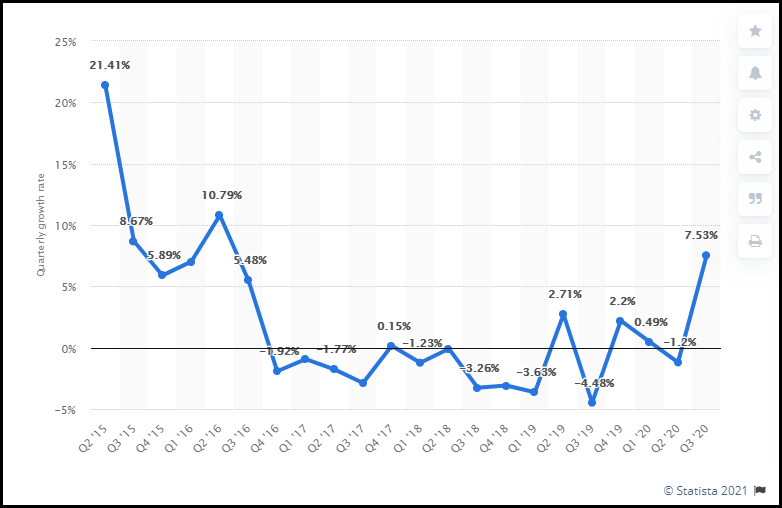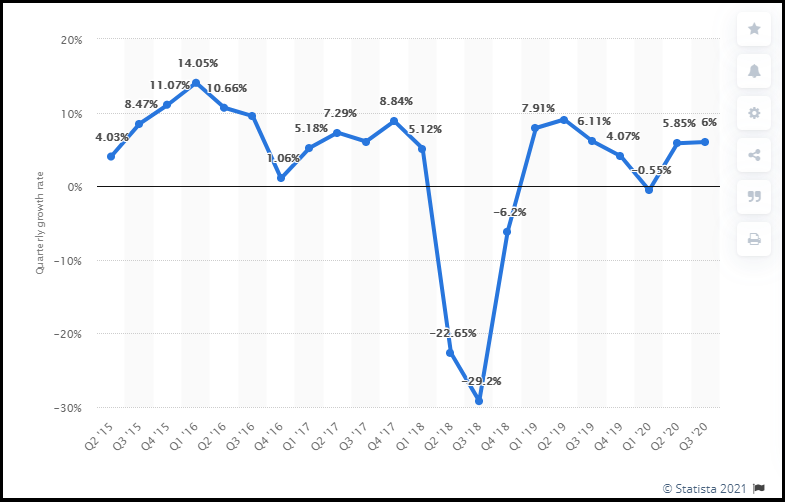
In February 2009, the media around the world began to talk about a "prodigy" - a nine-year-old Singaporean boy named Lim Ding Wen, who became the youngest developer of iPhone applications.
He created the Doodle Kids app that lets you draw with your fingers on the iPhone screen. In two weeks it was downloaded more than four thousand times.
Of course, this was facilitated by the fact that his father was the CTO of a local technology firm and the boy had been playing with computers since he was two years old. By the age of seven, he already knew six programming languages.
After eight yearsWith over twenty free smartphone apps released, this young talent is still in business. He is writing a diploma in information technology and dreams of becoming a game developer.
However, he believes that "the market for mobile phone applications is oversaturated" and that he is trying his hand at other projects using new languages and programming integrated circuits.
COVID saved mobile apps ... for a while
The prodigy hit the nail on the head. When the article with his statement came out in January 2017, the trend in the mobile app market was really going down.
Since the fourth quarter of 2016, the quarterly growth rate of the number of applications in the Apple App Store began to turn negative for the first time.

Growth in the number of available mobile apps in the Apple App Store worldwide from Q2 2015 to Q3 2020. Source: Statista A
similar trend is visible in the Google Play Store, although the growing popularity of Android phones and the release by developers of iOS applications of versions for Android kept it from starting a sharp decline.

Growth in the number of available mobile apps on Google Play worldwide from Q2 2015 to Q3 2020. Source: Statista
This trend confirms my point of view. At the end of 2016, I posted a post on LinkedIn titled " Mobile Apps Will Go Out Soon ", citing the fact that the market was already reaching saturation and that many apps would fade into oblivion or consolidate in the coming years.
In October 2018, I completed and reprinted the Medium article. The editors liked it and began to recommend it under the new name " The End of Mobile Applications Is Nearing". The article went viral, spawned a lot of imitations and outright piracy. One reader even suggested that I bet $ 1,000 that I would be wrong.
Fate wanted him to win this bet thanks to sheer luck. The metrics showed that I was right until 2020. year of COVID-19, thanks to the decline in physical activity and interactions that gave mobile apps a powerful boost.
Due to the new growth in the number of new applications and downloads, many in the application industry again began to make highly optimistic predictions for the future.
But is this really the right thing now? time to implement the idea of a mobile app development startup?
I don't think so. Most of the people who enthusiastically suggest this on online blogs and industry reports are the ones who make money from providing services such as analytics or digital marketing to app publishers.
If you are thinking about creating an application, then I recommend that you consider the following factors ...
Numbers can be misleading
First, one must distinguish between the growth of interest in economic activity and the economic viability of this activity as a business, especially if it is a startup!
While it can be argued that the total number of apps in the world is growing, in reality, many mobile apps get published, fail, and then remain abandoned online for a long time before being removed (as is the case with websites and blogs). App stores are filled with zombie apps, low-quality apps, and clones of games overflowing with ads, making the total not an accurate reflection of the economic viability of the app business.
App industry loyalists also point to an increase in smartphone users and app downloads. But these statistics are also distorted by the fact that most of these downloads are already existing and very popular social, service and gaming applications . Even free new apps often struggle to gain attention. For paid apps, the situation is even worse.
“Large audiences and their growth potential provide impressive statistics, but ... Consumers are spoiled for choice and expect applications that are fully responsive to their needs and have real value to them. Everything else is noise for them. " - App Trends 2020 , Adjust
Even if the app is downloaded, the retention rates are terrible. In 2020, the average user retention rate for the first day was only 25.2%. This means that three out of four users who download the app will never use it again after just a day. After 30 days, this figure drops to 3.5%. *
* Liftoff 2020 Mobile App Trends Report
Costs have risen significantly
In addition, the app market has matured terribly in a short time. To be able to compete and properly scale an application to a large user base today requires significant capital. Building and maintaining an enterprise-grade IT infrastructure requires very deep pockets, as well as continuous investment in marketing to attract, activate and retain users.
For infrastructure, just ask any techie who has worked in an established startup that supports applications used by millions of people. The technology stack and knowledge required extends well beyond the capabilities of a few coders with basic programming experience.
A 2015 poll found that the median cost range for iPhone app development " ranges from $ 37,913 to $ 171,450 and could go up to $ 500,000 or more ."
What's more interesting here, however, is that the largest component of all companies was “infrastructure” (rather than features, testing, or design) costs, accounting for more than a third of the total cost. Remember that infrastructure is often a permanent, not a one-time cost item.

" Poll: the cost of making a mobile application ", Clutch
As a simple index of marketing costs, let's take an average Per the Install Cost (the CPI, the cost of one unit) for 2020. For iPhone apps, it's $ 0.86; for Android apps - $ 0.44. Now multiply that by the number of users you hope to get and you get an idea of how much it might cost you (assuming you don't need other marketing costs).
Also keep in mind that CPIs are much higher for developed markets like the US (iOS $ 2.07, Android $ 1.72), and that popular platforms are more expensive (Facebook $ 1.80, Twitter $ 2 , $ 53, Instagram - $ 2.23).
At this point, aspiring startup founders might think: I have a great idea, I can start small, and then, when the application demonstrates potential, get the venture capital needed to fund the startup. In fact, the situation is this: most of the application ideas these days are not new. Investing in apps is no longer attractive to most venture capitalists.
And in case you don't already know how venture capitalists actually work, read my article " The truth about how VCs are choosing startups . "
But if in spite of all this you still will be able to become one in a billion, create a new application-unicorn, then you could potentially run into an obstacle, which is more serious than statistics or money.
The market mobile apps have indeed changed forever.
Applications as economic and political weapons
The success of mobile apps as a global product and social tool has also created a problem in this industry - apps have become a target for economic and political discussions.
It all started with the Trump administration's attempts to impose sanctions on Chinese tech companies and their products, including mobile apps, justifying it as concerns about national security. However, attempts to ban Chinese apps in the US are still subject to bureaucratic scrutiny and balancing prior to enactment.
However, India does not have such a problem.
In 2020, India issued three statements that it has already bannedat least 220 Chinese apps, including the hugely popular Tik Tok, WeChat and AliExpress, also under the guise of protecting national security.
Most observers believe the bans, which began in July 2020, were the result of bilateral friction following a border clash in the Himalayas a month earlier that killed 20 Indian soldiers.
Meanwhile, the Chinese government announced in December 2020 that it was removing 105 apps from the country's app stores, mostly developed domestically and containing illegal or offensive content. Oddly enough, most observers couldn't figure out why TripAdvisor, which is owned by the United States, is suddenly on the list.
Will this be the very beginning of the emergence of more geopolitical barriers to technology businesses and applications?
Only time will tell ...
Moving on
We can only be sure of the following: mobile applications will continue to grow in general terms until the number of smartphone owners stagnates. But the playground for startups will never be the same. Do you think that a pair of nerds building personal computers in their garage have the same chances of becoming a multi-billion dollar multinational company today as they did in the 70s?
In fact, you and a few techie cofounders can still make decent money if you know how to code. But long gone are the days when you could publish an app, and it would go viral, allowing you to get huge amounts of venture capital soon, or sell it for an amount that you can safely retire after.
It all comes down to three words - time is running out.
Technology and innovation are moving forward rapidly. Once the sector matures, it becomes a field for large and powerful companies. Niche players can still appear on it, but the odds are far from your favor.
By the way, what is our child prodigy doing today?
According to his LinkedIn and Twitter profile , Ding Wen has moved from making mobile apps to producing 3D VR apps and games.
Advertising
VDSina offers VDS for rent for any task, a huge selection of operating systems for automatic installation, it is possible to install any OS from your own ISO , a convenient proprietary control panel and a daily payment of a tariff that you can create individually for your tasks.
